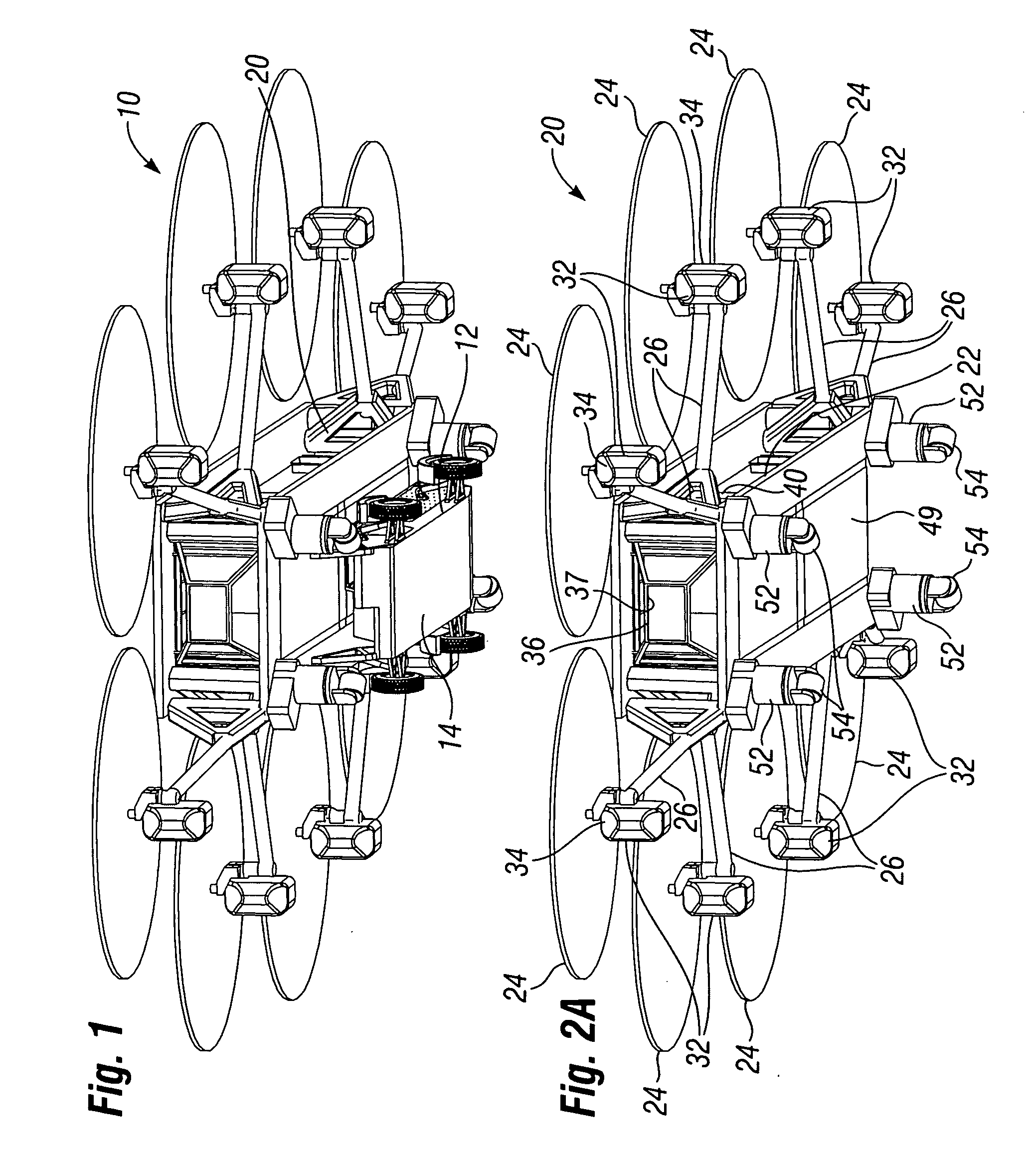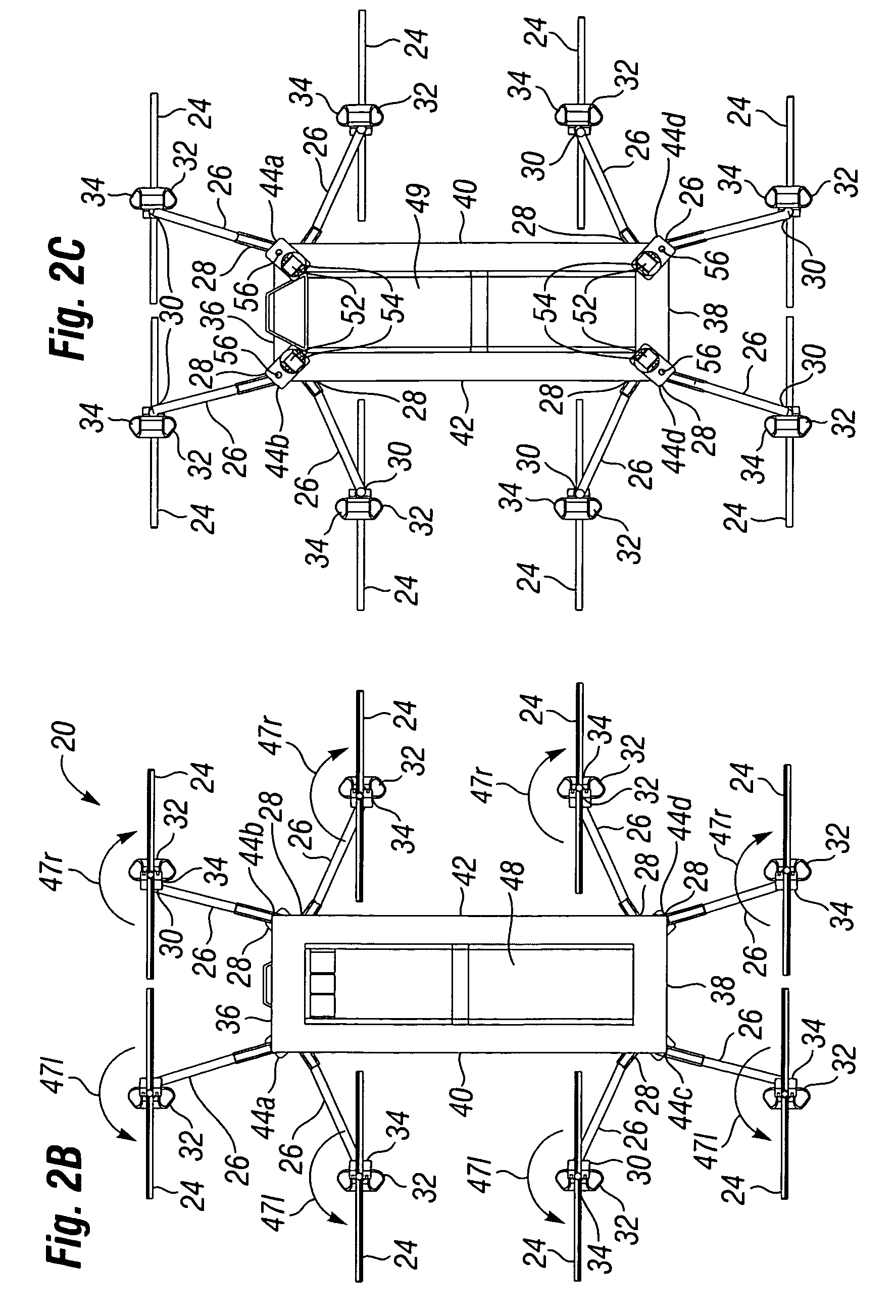Modular flying vehicle
a flying vehicle and module technology, applied in the field of flight vehicles, can solve the problems of failure and loss of helicopters, lack of vertical takeoff or landing (vtol) or even short takeoff or landing (stol), and inconvenient airplanes, so as to improve lift characteristics, reduce cost, and increase reliability
- Summary
- Abstract
- Description
- Claims
- Application Information
AI Technical Summary
Benefits of technology
Problems solved by technology
Method used
Image
Examples
Embodiment Construction
[0074]FIG. 1 depicts a vehicle 10 according the invention. The vehicle 12 includes a transport module 14 in the form of a ground vehicle 16 mated to an air vehicle 20.
[0075]FIGS. 2A-2E depict an air vehicle 20 according to an embodiment of the invention, comprising a main airframe 22 having a forward axis 23 passing through its middle in back-to-front fashion. Eight (8) propellers 24 extend from the airframe 22 on propeller supports 26. Each propeller support 26 has a proximal end 28 secured to the main airframe 22, and a distal end 30. In the particular embodiment depicted, each propeller 24 is linked to and individually powered by a devoted engine 32, with a linked propeller 24 and engine 32 forming an engine-propeller assembly 34. One engine-propeller assembly 34 is positioned at the distal end 30 of each propeller support 26. Note that the engine-propeller assemblies for use with the invention may have different configurations, depending on the particular application. In one emb...
PUM
 Login to View More
Login to View More Abstract
Description
Claims
Application Information
 Login to View More
Login to View More - R&D
- Intellectual Property
- Life Sciences
- Materials
- Tech Scout
- Unparalleled Data Quality
- Higher Quality Content
- 60% Fewer Hallucinations
Browse by: Latest US Patents, China's latest patents, Technical Efficacy Thesaurus, Application Domain, Technology Topic, Popular Technical Reports.
© 2025 PatSnap. All rights reserved.Legal|Privacy policy|Modern Slavery Act Transparency Statement|Sitemap|About US| Contact US: help@patsnap.com



